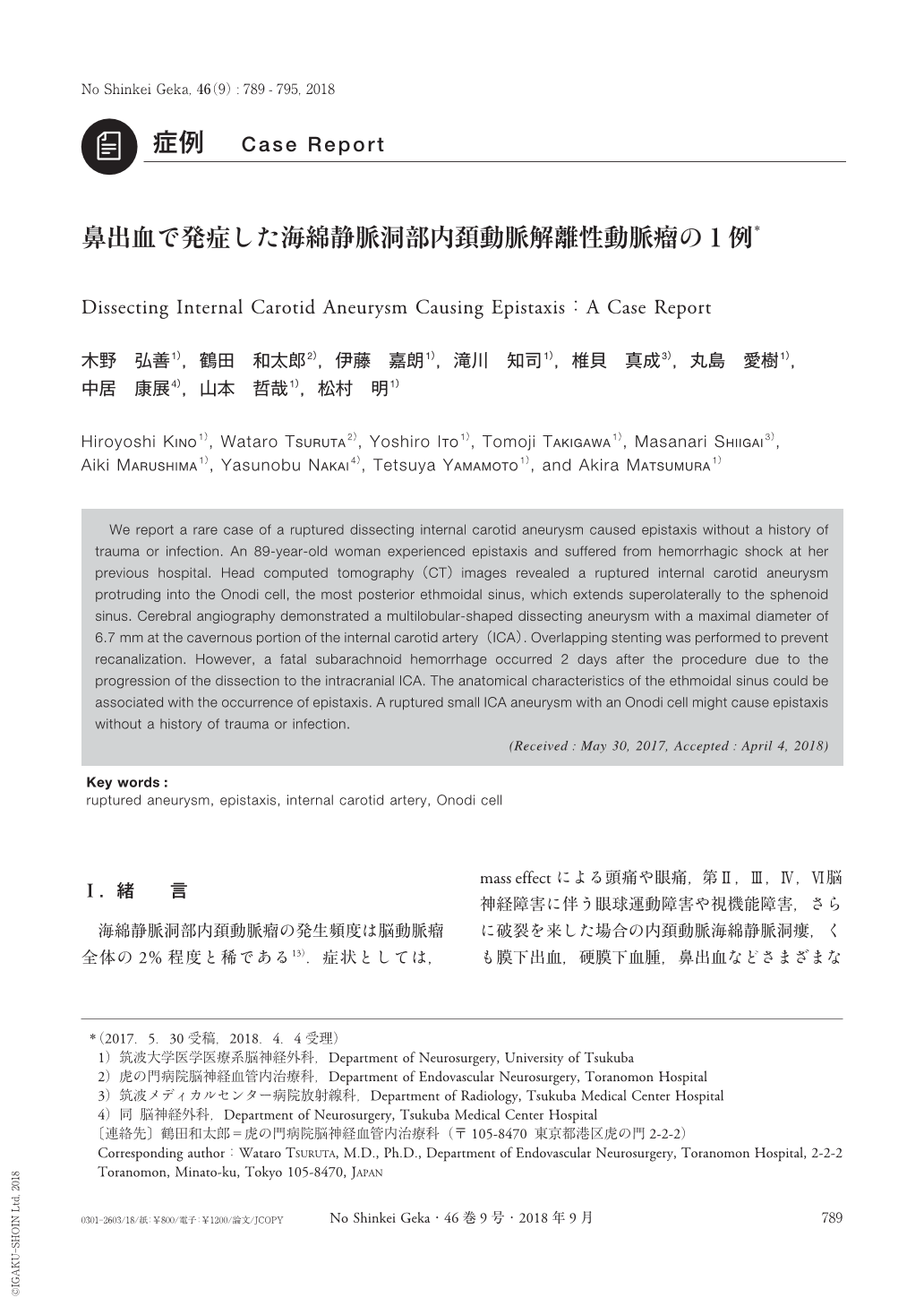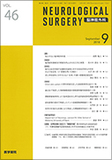Japanese
English
- 有料閲覧
- Abstract 文献概要
- 1ページ目 Look Inside
- 参考文献 Reference
Ⅰ.緒 言
海綿静脈洞部内頚動脈瘤の発生頻度は脳動脈瘤全体の2%程度と稀である13).症状としては,mass effectによる頭痛や眼痛,第Ⅱ,Ⅲ,Ⅳ,Ⅵ脳神経障害に伴う眼球運動障害や視機能障害,さらに破裂を来した場合の内頚動脈海綿静脈洞瘻,くも膜下出血,硬膜下血腫,鼻出血などさまざまな症候を呈する9).破裂海綿静脈洞部内頚動脈瘤の発生機序については,特発性,外傷性,感染性,動脈硬化性のものが報告されており,なかでも外傷性のものが多い14).非外傷性に鼻出血のみで発症する海綿静脈洞部内頚動脈瘤は極めて稀である12).
今回われわれは,頭部外傷や感染の既往がなく,鼻出血のみで発症し,治療に難渋した海綿静脈洞部内頚動脈瘤の1例を経験したので,文献的考察を加えて報告する.
We report a rare case of a ruptured dissecting internal carotid aneurysm caused epistaxis without a history of trauma or infection. An 89-year-old woman experienced epistaxis and suffered from hemorrhagic shock at her previous hospital. Head computed tomography(CT)images revealed a ruptured internal carotid aneurysm protruding into the Onodi cell, the most posterior ethmoidal sinus, which extends superolaterally to the sphenoid sinus. Cerebral angiography demonstrated a multilobular-shaped dissecting aneurysm with a maximal diameter of 6.7mm at the cavernous portion of the internal carotid artery(ICA). Overlapping stenting was performed to prevent recanalization. However, a fatal subarachnoid hemorrhage occurred 2 days after the procedure due to the progression of the dissection to the intracranial ICA. The anatomical characteristics of the ethmoidal sinus could be associated with the occurrence of epistaxis. A ruptured small ICA aneurysm with an Onodi cell might cause epistaxis without a history of trauma or infection.

Copyright © 2018, Igaku-Shoin Ltd. All rights reserved.


